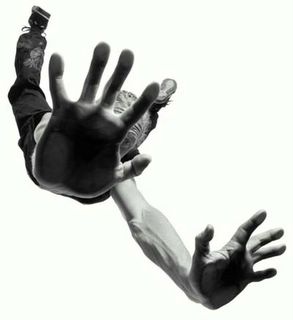Awareness Anticipation & Listening
I received a great email from a Daily Yoga Tip reader suggesting two things he does to internalize the practices he is studying:
1. Always have fun, andAnother Daily Yoga Tip reader wrote to pass along this old maxim:
2. Practice teaching the the thing you are trying to learn.
Teach something to another person ten times and you'll never forget it.I mentioned yesterday that my wife and daughter took me to see Fiddler on the Roof Saturday night. It was very enjoyable!
As usual, I was thinking about you while I was there that evening.
There's a scene in Fiddler that, combined with the experience of going to the theater, reminded me of this principle that will also help you take yoga to heart.
When Tevye's daughter Chava defies tradition by marrying outside of her family's faith, Tevye cuts her off from the family and begins to act as if she were dead.
It's heart-wrenching.
The political authorities then force the villagers to sell all they have and move out. Facing a journey to Poland, and knowing that her parents and sisters will relocate in the United States, Chava returns to her father's gate to bid him goodbye.
"He won't listen," the young woman's mother tells her.
"But at least he'll hear," replies Chava.
If you want to take yoga to heart, you've got to listen, not just hear.
Apparently, Tevye did both. Because Chava got through to his heart and he gave her a blessing.
Listening has an eager quality to it. It's full of potential and anticipation. It's like a dry sponge, ready to absorb.
I was thinking of this as we sat waiting for the show to start. The house lights had dimmed. Everyone was sitting quietly in his or her seat. The conductor's hands were raised. The curtain was about to go up. Everyone was waiting for the first sound. They were listening.
I studied with a yoga teacher once who said that when you listen, the shape of your brain literally changes. I've paid attention when I listen, and I think she's right. The whole quality of your being alters when you switch from hearing to listening. Try it.
I believe the key element in this shift is awareness.
BKS Iyengar will release his new book Light on Life sometime in the next few days. Here's an excerpt about awareness:
The purpose or goal of asana is to align and harmonize the physical body and all the layers, or sheaths, of the subtle emotional, mental, and spiritual body. This is integration. But how does one align these layers and experience integration? How does one find such profound transformation in what from the outside may look simply like stretching or twisting the body into unusual positions? It begins with awareness.Want to learn yoga by heart? Listen.
Don't just read about it. Get up. Experience it. Experience yoga!
Kevin Perry
www.ExperienceYoga.org
p.s., Experience alone won't do it. I can have the experience of hearing without the awareness of listening.
Our Experience Sanskrit workshop is designed to provide you with experiences that make the Sanskrit names of yoga poses hard to forget. We make these experiences attractive and vivid to help you keep your awareness and anticipation tuned into the "receive" mode.
Here's what you get when you participate in Experience Sanskrit:
- You'll learn the stories BEHIND the yoga poses. The stories are rich with details that make strong associations in your mind.
- You'll experience naming all of your body parts and using those names, too.
- You'll experience Sanskrit math. Counting will never be the same. But you'll find out that Sanskrit numbers are not very different from numbers you already know.
- We'll sort out the confusion about the difference between the "common name" of a pose and it's Sanskrit name.
- and more.
p.p.s., Annapolis, Maryland, we're coming your way in March, 2006.
p.p.p.s., Want to bring the Experience Sanskrit workshop to your yoga studio? Email me at info@experienceyoga.org. We'll set a date and we'll be at your place before you know it.
All rights reserved, Mo Yoga LLC.







